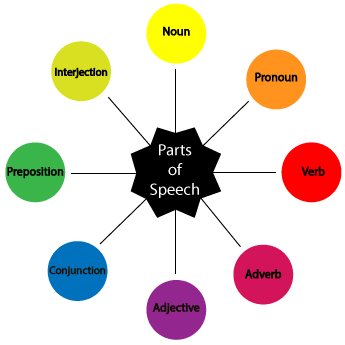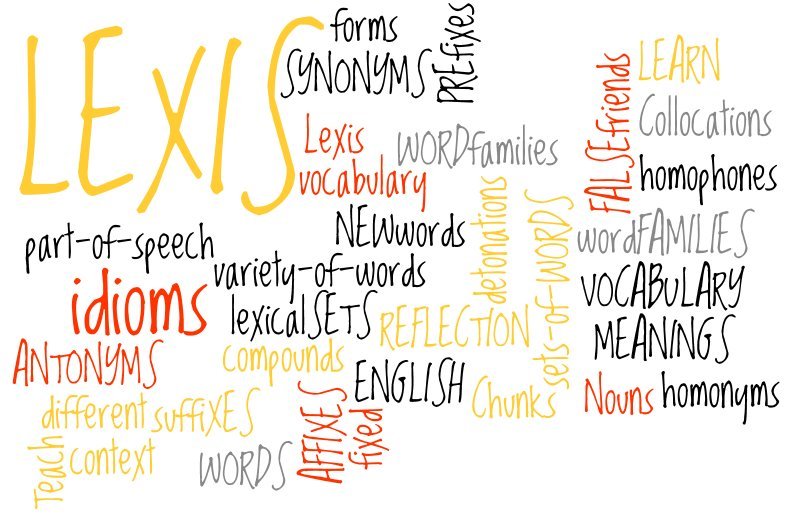

In our 4-week TEFL training in Costa Rica, we will explain and model how to teach both grammar and vocabulary to your ESL students. These students must acquire vocabulary, or lexis, to understand written and spoken English and be understood when speaking or writing. However, you are not only asking students to learn new words, you are also teaching them strategies to continue learning new words. As the teacher, you must have a good understanding of lexical foundations such as word formations, parts of speech, and collocations.
Word Formations
A word root is the main part of a word. For example, the adjective “possible” means something is able to de be done. A prefix is a set of letters placed at the beginning of a word, and it alters the meaning of the word, or root. For instance, “impossible” means something is not possible. A suffix is a set of letters attached the end of a word that often changes the word’s part of speech and sometimes its meaning, but it can also simply change nouns to plural or indicate a change in tense. For example, “possibility” is the noun form of “possible.” Analyzing words for roots, prefixes, and suffixes might help students figure out some words that they encounter in their reading or listening activities.

Parts of Speech
The part of speech is the category assigned to a word based on its function. For instance, a “noun” is a person (teacher), place (Costa Rica), thing (table) or idea (freedom). “Pronouns” replace or refer to nouns. For example, Bob likes Lisa. could become He likes her. A, an and the are known as “articles.” “Verbs” are the action or state of being. She works at Taco Bell. Works is the verb. “Prepositions” are words that show relationship between words like on, above, below, at, and in. “Conjunctions” are words like because, so, and or that connect phrases or sentences. Words that describe nouns are called “adjectives.” Pretty, happy and intelligent are examples of adjectives. “Adverbs” modify verbs, adjectives or other adverbs. For instance, Elizabeth works quickly. “Quickly” describes how Elizabeth works. Finally, “interjections” are short exclamations that show emotion like “Yikes!” or “Ouch!”
Collocations
Collocations are groups of words that normally go together. For example, there are verbs that are frequently followed by certain nouns. For instance, we say “make the bed,” “make arrangements,” and “make friends.” However, we say, “do your hair,” “do the dishes,” and “ do a favor.” There are also common collocations of adjectives that are followed by nouns. We say “fast food,” not “quick.” We can say “junk food,” but not “trash.” We say “health food,” but not “well-being” food. When focusing your instruction on collocations, it is a good idea to teach associated collocations at the same time. This will increase the likelihood that your students will use the words properly.
Phrasal Verbs
Phrasal verbs are verbs that contain a verb with a preposition and has a meaning of its own. These are difficult for our English learners, as one can know the meaning of the verb as well as the meaning of the preposition, but putting the verb and preposition together does not usually create a meaning that is easy to understand. For instance, the verb “pick”means to select or remove as in I picked the apple from the tree. The preposition “on” literally means on top of like in The book is on the table. However, the phrasal verb “to pick on” means to make fun of or criticize. For example, My big brother always picked on me when we were kids. Consider the meaning of other phrasal verbs with “pick” like “pick up,” “pick out,” or “pick up on.”

Idioms
An idiom is a phrase or expression that cannot always be understood literally. For example, He’s in the dog house means someone is angry at him for something he has done. His words cut like a knife implies that the words he said were very hurtful. Idioms are used frequently in everyday language, so it’s important that we take the time to teach these to our ESL students. Some teachers introduce an idiom each day to their students in higher levels. You could also teach a handful of idioms at the same time that are connected to a theme, like sports (He’s always the front runner for the company.) or animals (She’s a social butterfly.)

Teaching Lexis
The vocabulary you teach in your classroom and how you teach it will depend on the students’ level, age, and their motivation behind learning English. For beginning learners, it makes sense to promote acquisition of the most commonly used words. Common verbs include be, go, like, look, listen, feel, see, hear, know, and so on. Nouns for beginners include basic emotions, parts of the body, family members, professions, food, and everyday objects. There are several sites that feature word lists for each English level. Also, most textbook series present vocabulary in units organized by topics, which makes it easier for the students to learn. Whatever words, collocations or idioms you introduce to your students, present them in context and provide multiple opportunities to interact with the words in order to enhance retention.
Some other effective tools to reinforce targeted vocabulary include using images, realia and body language, giving more examples of the words being used in context, categorizing words into groups, providing antonyms and synonyms, and asking students to keep a running list of new vocabulary in a journal.
Want to learn more about teaching lexis to English learners and get hands-on experience? Contact us today to sign up for our 4-week TEFL training in Costa Rica!

3 Important ESL Classroom Techniques

